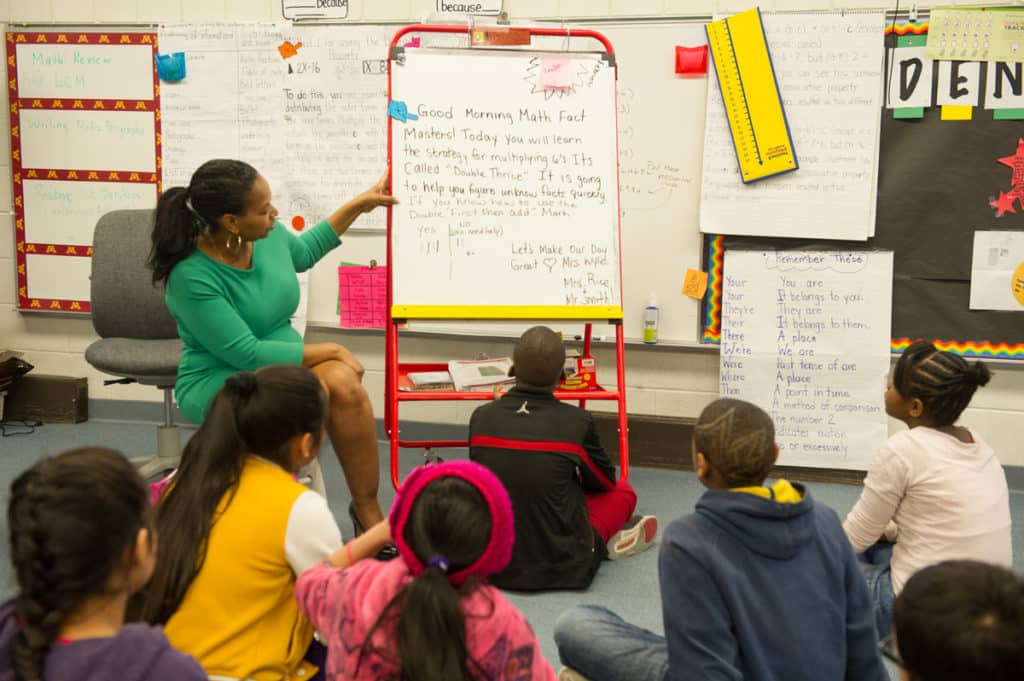
One March morning, children entering a fourth grade classroom take turns gathering at a chart on which their teacher has written a message just for them:
March 7, 2025
Dear Invertebrate Investigators,
Yesterday we continued our studies about invertebrates, and we put two types of food in our worm farm. Recall what you know about worms as we make new observations today.
Make a prediction: How do you think the contents of the worm farm will have changed since yesterday?
Some children softly read the words aloud; others read silently. They chat about their predictions and take turns writing them in the space at the bottom of the chart.
When they finish, they move on to another morning activity and a new group of students moves in. It’s a fluid process rich with opportunities for social interactions, informal learning, and the building of classroom community and students’ sense of competence.
A daily message, written by the teacher for the class and highlighting one aspect of the learning day ahead, is a simple but highly effective technique for welcoming students into the classroom, setting the tone for the day, and reinforcing academic skills. Teachers in a wide range of K–6 classroom settings use daily messages in various ways. For example, a kindergarten teacher who is introducing the relatively new vocabulary word ‘geometry’ can emphasize it visually and include a reminder about its definition in the text. In responding to this message, her students can draw squares, ovals, circles, triangles, stars, and a heart, a task which will generate enthusiasm for a new unit of study about shapes.
In classes that use the Responsive Classroom approach, morning messages play an important role in the last segment of Morning Meeting, when the class reads and works with the message together before moving into the rest of their day. The message is also often integrated into activities and lessons later on in the day.
Well-crafted morning messages generate enthusiasm about the day ahead, reinforce academic skills, and strengthen students’ sense of themselves as a learning community. In the words of one fifth grade teacher, the message “focuses children’s attention on the business of school and gives them a sense of purpose and belonging in the classroom.”
Well-designed messages can anchor the day’s learning. Students look forward to seeing and discussing them each morning. Teachers rely on them to launch their day of teaching. Here are a few tips on how to create purposeful morning messages for your students.
Predictability helps students feel secure, and the completed message signals to the children that you’re ready to start the day. Plus, seeing that you’ve taken time to write to them daily shows students that morning messages are important and deserve their attention.
Sturdy and easily moveable, an easel stand holding the message chart can be placed to welcome the children as they enter the room, repositioned in the Morning Meeting circle, and then moved to a spot where students can continue reading or writing on the chart during the day. Another advantage of using chart paper is that messages can easily be saved for later use or review.
This is a key to crafting messages that engage students. Instead of using the message to review the day’s schedule, choose one idea drawn from a topic of current interest to the class and get them thinking about it. Message topics can be derived from curriculum units, classroom issues and interests, or events in the news.
Talking to colleagues or perusing the countless ideas in our Morning Meeting resources can be a great way to get ideas and get over “writer’s block.” But your messages will be most powerful and engaging to your students if tailored to their particular needs and learning goals.
Discover a wide range of Morning Meeting resources that are perfect for educators who are new to the practice or experienced teachers looking for fresh ideas to engage their students.
Start with the essentials:
The Morning Meeting Book, 4th Edition is your comprehensive guide to bringing Morning Meeting to life in your classroom.
Need fresh ideas morning message ideas?
Explore these go-to resources for greetings, sharing, activities, and messages:
Want to integrate academics into Morning Meeting?
Here are some fun, engaging ways to connect Morning Meeting with core subjects: